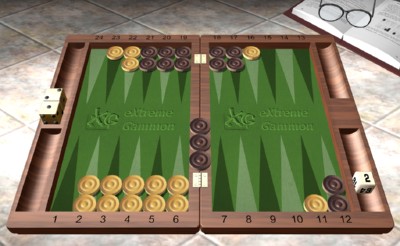Cash game, White owns the cube. White on roll.

(a) Should White double?
(b) If doubled, should Black take, drop, or beaver?
Among the many relatively unexplored position types in backgammon is one I call the “Late Game Blitz”. The general idea is pretty simple. One side has a blitz in progress. The other side, unlike the case in the basic opening blitz, has some sort of structure in place, which might range from a few scattered points to an imposing five-prime. The blitzer has some number of checkers to extricate from behind this structure before he can claim the game.
These Late Game Blitz positions are relatively common and often incredibly difficult. Many points are swung with errors in this type of game, and the errors are often very large. If you’re looking to work hard to improve your play and results, these are good positions to focus on. The ability to handle these positions well will make a big difference in your play.
This problem illustrates a sub-category of positions in the Late Game Blitz world. White has three of Black’s checkers trapped on the bar against a 5-point board. (That’s the good news.) But on the other side, he has to escape three checkers from behind a 5-prime, and one of those checkers is not at the edge of the prime. What to do? Gammons are certainly floating in the air, but that 5-prime could be hard to jump.
There’s a crude rule of thumb that applies to positions where your opponent is trying to enter against a 5-point board, and you have a 5-prime to leap. Count the number of checkers your opponent has to enter. (Here it’s three.) Now count the numbers you have to roll exactly to escape his prime. Here White needs an ace plus three sixes – four numbers in all. If your count is the same as his count, and your spare checkers aren’t all used up yet (here the two spares on the 16-point and 11-point have several rolls left before they’re dead – remember, you won’t move them with sixes) then the position is probably double-take. If your count is higher than his (the case here where you need four and he needs only three), don’t double. If your count is lower than his, it’s a big pass and perhaps even too good.
Solution:
(a) White shouldn’t redouble.
(b) Black has a very easy take if doubled.





